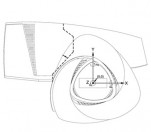Design of Sustainable Asian Supertall Buildings for Wind

The sustainability of supertall buildings is a laudable goal and general enough in its statement to allow interpretation within all areas of tall building design. From a wind engineering viewpoint, the design of sustainable super tall buildings translates in one sense to efficiency and in another to long-term performance or durability. Design efficiencies related to good consideration of wind – form, structure, material – result in lower initial costs and carbon footprint. Long term performance as it relates to occupant comfort and enjoyment and durability of building components including the curtain wall are each driven in large part by windinduced motions of a given building as well as the internal thermal conditions maintained by ventilation: be it delivered by natural ventilation or building mechanical systems.
Wind engineering for tall buildings requires examination of a number of variables including the local climate and the exposure of a building, the architecture and its susceptibility to different wind loading phenomena, the structural system and how its key parameters affect loading and performance. Further, appreciation of the wind climate around the building can lead to a higher viability of natural ventilation: this is a component that can be designed through building form.
Ultimately, it is important that the criteria against which a given building is judged includes sensitivity to the owner’s wishes and the ultimate occupants of the completed building. The present paper examines good wind engineering practice and a discussion of natural ventilation as it relates to tall buildings with some examples specific to supertall buildings, following the CTBUH definition of greater than 300m in height.
The Nature of Wind for Supertall Building Design
Most meteorological data for building design comes from airport measurements at 10m above grade. In the case of supertall buildings, exclusive use of this data is inappropriate for design because the increase of wind speed with elevation does not necessarily follow building code models. While such models have been largely validated for building heights up to about 300m, wind speeds beyond this height can be significantly more variable (Irwin, 2006).
Above 300m, wind flow properties in storms generally follow the engineering model of strong winds in the atmospheric boundary layer associate with synoptic storm systems such as described in ESDU (1982, 1983). However, depending on region, strong winds may also be due to one of a number of different storm types with profiles as indicated in. The wind speed profiles (nominal mean values) shown in were determined from various studies of individual storms using Weather Research Forecasting (WRF) tools applied in wind climate studies by RWDI.
Full content of this issue you can read here
The full version of the article can be read in our printed issue, also you can subscribe to the web-version of the magazine
 Materials are courtesy of CTBUH
Materials are courtesy of CTBUH
Text: Jon Galsworthy, Duncan Phillips, Peter Irwin & Jiming Xie


